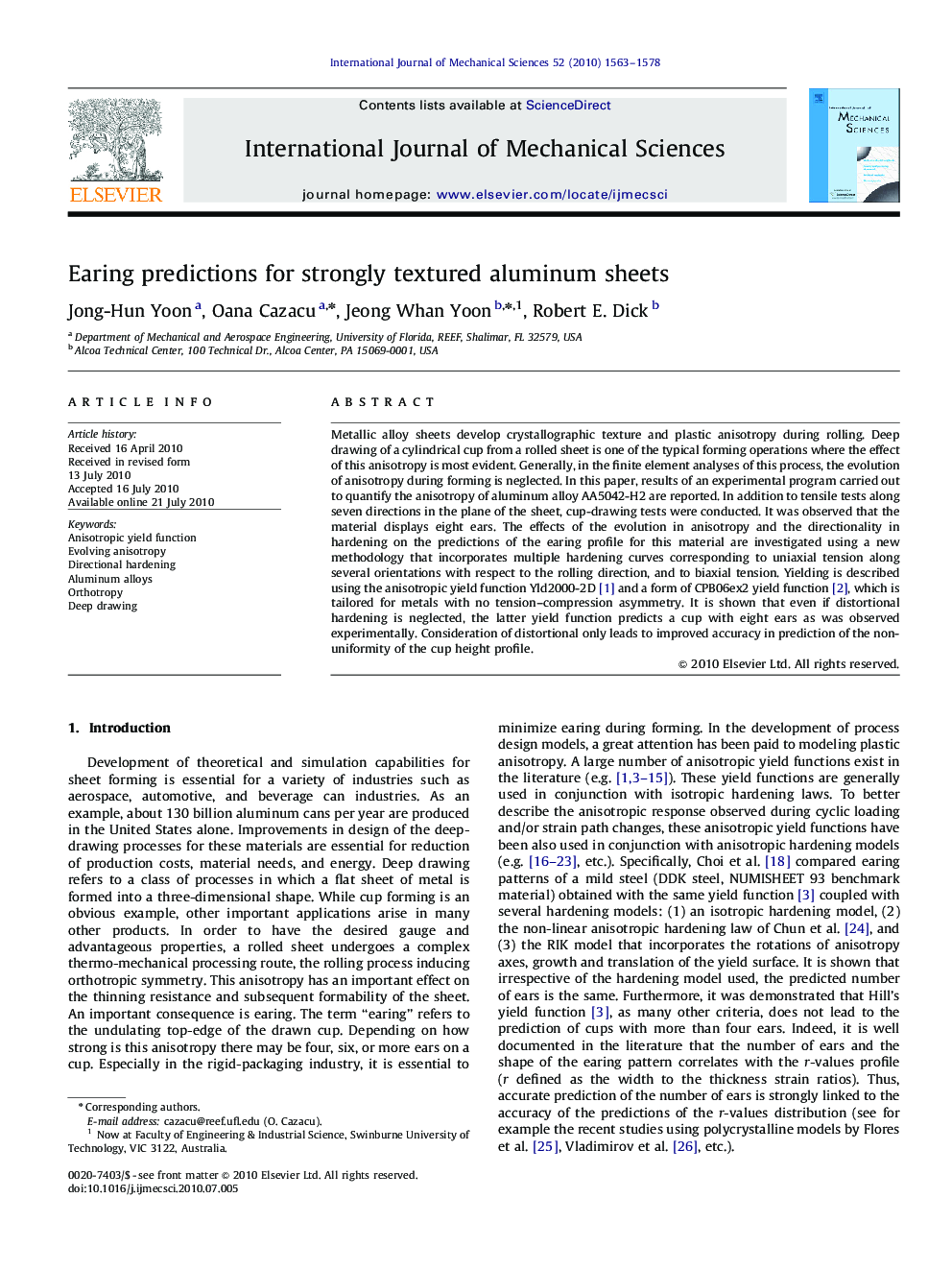| Article ID | Journal | Published Year | Pages | File Type |
|---|---|---|---|---|
| 782680 | International Journal of Mechanical Sciences | 2010 | 16 Pages |
Metallic alloy sheets develop crystallographic texture and plastic anisotropy during rolling. Deep drawing of a cylindrical cup from a rolled sheet is one of the typical forming operations where the effect of this anisotropy is most evident. Generally, in the finite element analyses of this process, the evolution of anisotropy during forming is neglected. In this paper, results of an experimental program carried out to quantify the anisotropy of aluminum alloy AA5042-H2 are reported. In addition to tensile tests along seven directions in the plane of the sheet, cup-drawing tests were conducted. It was observed that the material displays eight ears. The effects of the evolution in anisotropy and the directionality in hardening on the predictions of the earing profile for this material are investigated using a new methodology that incorporates multiple hardening curves corresponding to uniaxial tension along several orientations with respect to the rolling direction, and to biaxial tension. Yielding is described using the anisotropic yield function Yld2000-2D [1] and a form of CPB06ex2 yield function [2], which is tailored for metals with no tension–compression asymmetry. It is shown that even if distortional hardening is neglected, the latter yield function predicts a cup with eight ears as was observed experimentally. Consideration of distortional only leads to improved accuracy in prediction of the non-uniformity of the cup height profile.
